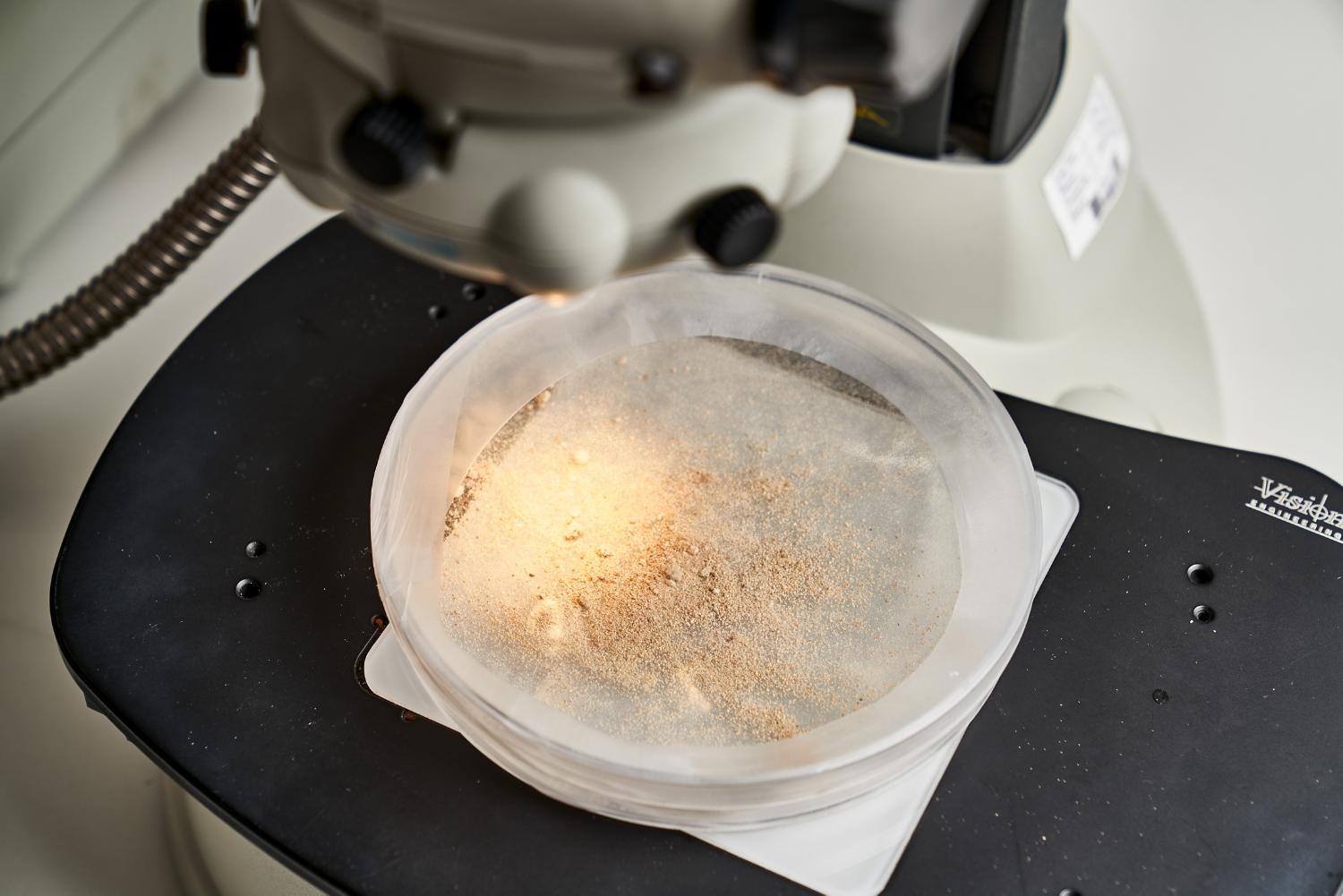
The Dyson Dust Study 2023
At Dyson, we make it our mission to know what’s in your dust and the potential impact it can have on our health and wellbeing. Our team of in-house microbiologists study real dust from around the world, analysing particles measuring from 70 microns in size, the width of human hair, right down to 0.1 microns, the size of a virus.
Our microbiology and household dust labs allow us to investigate the components of real dust, debris and airborne pollutants found in real homes. We even farm our own dust mites, enabling our scientists to collect their faeces and learn more about dust mite allergens. Only through this extensive research can Dyson engineers continue to design new vacuum cleaner technologies, to better deal with the conditions they face in the real world.
26 May 2023
Beyond the extensive research and testing we do across our labs, we also investigate cleaning habits and behaviours from around the world in our annual global dust study. Here, we detail the key findings from Dyson’s 2023 Global Dust Study.
.jpg?$responsive$)
Are cleaning habits changing?
The study1, undertaken by over 30,000 people from 39 countries, reveals that post-pandemic, cleaning habits globally are slipping with only 41% of people claiming to have a regular cleaning schedule, 15% lower than last year2.
Motivations are tending to be more reactive, with 60% cleaning when they see visible dust or dirt; further indicating that we’re becoming less disciplined when it comes to scheduled cleans.
-
%20(1).jpg?$responsive$&cropPathE=desktop&fit=stretch,1&fmt=pjpeg&wid=960)
-
“The COVID-19 pandemic emphasised the need for regular cleaning to maintain healthy homes”, said Monika Stuczen, Research Scientist in Microbiology at Dyson. “This significant increase in the number of people only cleaning when they spot visible dust is a cause for concern, as many dust particles – including bacteria, house dust mite faeces and pollen – are microscopic in size and not visible to the naked eye.”
-
Understanding what's in our dust
The Global Dust Study also reveals that awareness of what’s in our household dust – and therefore what we’re trying to remove – is low. Notably, 53% of households globally have someone who is impacted by allergies but just 33% surveyed said they were aware that pollen can reside in our dust and 32% knew about the potential presence of dust mite faeces – both common allergy inducers.
Pet hair is a visible problem but pets can also introduce invisible allergens and bacteria to the home. The study found that in general, awareness of what particles can reside on pets has increased since last year. Despite this, 3 in 4 were not aware that pets can carry pollen and almost half didn’t know that bacteria could reside on pet fur.
Dyson microbiologists and research scientists have analysed hair from a variety of animals, from traditional pets like cats and dogs to more unexpected animals such as alpacas, donkeys, horses and rabbits. We have a detailed understanding of size, texture and structure of hair across animal species and breeds, as well as the invisible allergens and bacteria they can introduce to the home.
“The pandemic saw a surge in pet ownership. With lockdown restrictions lifting globally, owners should look to maintain regular grooming and cleaning schedules, as microscopic particles reside on pets and can potentially be spread around the home.”
-
And how to effectively remove it
While many people assume that if dust and dirt is picked up then the problem is solved, vacuum cleaning is pointless without thorough filtration. Dyson’s dust study reveals that awareness of filters overall is low, and despite it becoming a buzzword during the pandemic, just 1 in 4 consider themselves to be aware of HEPA (High Efficiency Particulate Air).
At Dyson, we know an essential job of a vacuum cleaner is trapping dust inside the machine and expelling cleaner air. How clean that air is, is determined by its filtration system; whereby filter design, airflow pathways, and machine sealing work together to ensure the dust that is sucked up, is not expelled back into the air.
A common misconception is that any machine equipped with a HEPA filter makes it a HEPA product. According to ASTM, a world-leading standards institute, it is not enough for just the final, post-motor filter to be HEPA-grade; every single filter and seal throughout the machine must be HEPA-grade for it to be considered a HEPA product.
Some competitors claim to use HEPA filters, but they are housed in poorly sealed machines that allow dirty air to bypass the filter and expel back into the room. Others conduct their testing focusing only on filter performance, not the whole machine. However, filtration performance of any product is an interaction of all its parts, assemblies, and systems. They must be designed and tested to work together to achieve the maximum potential.
Dyson engineers have spent the last three decades developing our filters and seals to make sure that we capture not only the dust you can see, but also the dust you cannot. Our cordless vacuum cleaners are fully sealed and equipped with an advanced five-stage filtration system to capture particles up to 99.99% of particles as small as 0.1 microns3.
“We hope our latest global dust study will continue to encourage people to think about what can reside in household dust, and how that might impact the well-being of those in their household. The best way to remove dust is by using a vacuum cleaner with effective filtration and sealing technology, to ensure that whatever you vacuum remains trapped and is not expelled back into the home.”
.jpg?$responsive$)
Footnotes
1 33,997 online interviews across a representative sample of 39 countries. Fieldwork was conducted between 11th January and 6th February 2023. Data has been weighted at a ‘Global’ level to be representative of different population sizes.
2 The Dyson 2022 Global Dust Study included Russia and Norway but these markets were removed in 2023. The following markets were new to the 2023 study and did not participate in previous years: Finland, Greece, Cxechia, Romania, Hungary, Israel, Saudia Arabia, South Africa, Indonesia.
3 Filtration tested against ASTM F3150, tested in Boost mode by independent third-party, SGS-IBR Laboratories US in 2022. Filtration efficiency is calculated by comparing the number of standardised dust particles entering the vacuum cleaner against those released. The capture rate may differ depending on actual environment and the mode.
Press contacts
-
Press office
-

 (1).jpg?$responsive$)
.jpg?$responsive$)
.jpg?$responsive$)


